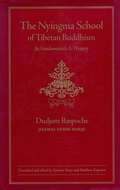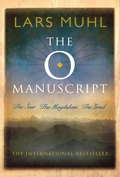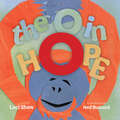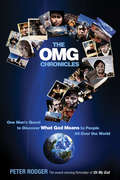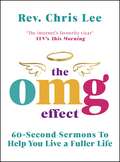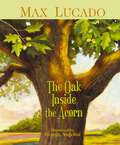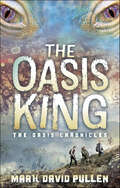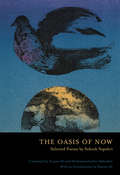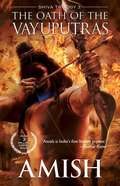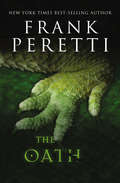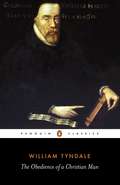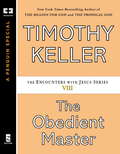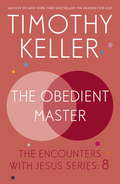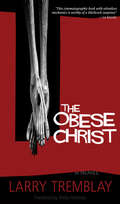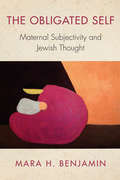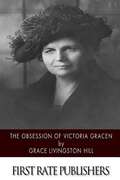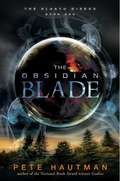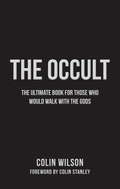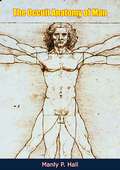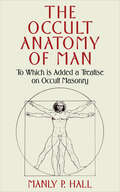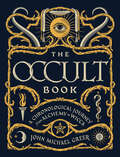- Table View
- List View
The Nyingma School of Tibetan Buddhism: Its Fundamentals and History
by Gyurme Dorje Dudjom Rinpoche Matthew KapsteinWritten by a great modern Nyingma master, Dudjom Rinpoche's The Nyingma School of Tibetan Buddhism covers in detail and depth both the fundamental teachings and the history of Tibetan Buddhism's oldest school. This, the first English translation of His Holiness' masterwork, constitutes the most complete work of its type in the West. An absolute treasure for students of the tradition, it is also an indispensable reference for anyone with an interest in Buddhism. The book includes chronologies and glossaries that elucidate Buddhist doctrine, and it provides fascinating insights into the Buddhist history of Tibet. Two treatises form the present volume, namely the Fundamentals of the Nyingma School and the History of the Nyingma School. Among the most widely read of all His Holiness Dudjom Rinpoche's works, these treatises were composed during the years immediately following his arrival in India as a refugee. His intention in writing them was to preserve the precise structure of the Nyingma philosophical view within its own historical and cultural context. This is the first time this text has been available in a trade edition. Beautifully presented, this single-volume edition represents a truly wonderful gift, and features illustrations in black and white and in color, plus maps, bibliographic information, and useful annotations.
The O Manuscript
by Lars MuhlThe O Manuscript, a real-life Gnostic thriller, has sold over 60,000 copies in Denmark, the equivalent of 3 million in the United States, since it was first published in 2000. Lars Muhl was for many years a successful pop star who studied the world's religions and esoteric knowledge between gigs and recording sessions. When a nervous-system illness sidelined him in the mid-1990s, he turned in desperation to a spiritual healer who was able to get him back on his feet after a single phone call. Intrigued by this mysterious man, Muhl traveled to southern France to become his apprentice. Together, Muhl and the healer, who is known in the book simply as "The Seer," embark on an adventure that is part history lesson, part Jedi-style initiation. "My work with The Seer began on Montségur, the holiest site of the Cathars, the medieval French religious sect that was persecuted by the Roman Catholic Church," notes Muhl." It was the middle of summer and the hike up the mountain is pretty strenuous. At the same time that The Seer was testing my physical endurance, he was breaking down my emotional resistance. He taught me how to let go of the burdens from my past." Towards the end of his apprenticeship, after years of searching for Montségur's secret cave, Muhl finally stumbles upon it. Inside he finds himself in the presence of "O," the Messenger of Light; the source of all things; the symbol of ecstatic union. O tells Muhl, "Everything mankind longs for is, and has always been, within his reach. If he would only acknowledge this there wouldn't be anything else to look for. When this happens mankind will step out of his self-made prison and into reality." The O Manuscript is not another book about positive thinking. Throughout his initiation, Muhl was forced to confront his dark side, the shadows that kept him from true health and wellness. "This is my journey," says Muhl. "Every word of it is true and really happened to me, but it is also meant to be a kind of allegory. The lessons I learned are universal." Praise for The O Manuscript:"I recommend this amazing story to anyone seeking the path to enlightenment." --Al Jardine, The Beach Boys "Lars Muhl tells an extraordinary tale in an extraordinary way...It is a story that, for too long, has been cyring out to be told." --Henry Lincoln, co-author of The Holy Blood and the Holy GrailFrom the Hardcover edition.
The O Manuscript
by Lars MuhlThe O Manuscript, a real-life Gnostic thriller, has sold over 60,000 copies in Denmark, the equivalent of 3 million in the United States, since it was first published in 2000. Lars Muhl was for many years a successful pop star who studied the world's religions and esoteric knowledge between gigs and recording sessions. When a nervous-system illness sidelined him in the mid-1990s, he turned in desperation to a spiritual healer who was able to get him back on his feet after a single phone call. Intrigued by this mysterious man, Muhl traveled to southern France to become his apprentice. Together, Muhl and the healer, who is known in the book simply as "The Seer," embark on an adventure that is part history lesson, part Jedi-style initiation. "My work with The Seer began on Montségur, the holiest site of the Cathars, the medieval French religious sect that was persecuted by the Roman Catholic Church," notes Muhl." It was the middle of summer and the hike up the mountain is pretty strenuous. At the same time that The Seer was testing my physical endurance, he was breaking down my emotional resistance. He taught me how to let go of the burdens from my past." Towards the end of his apprenticeship, after years of searching for Montségur's secret cave, Muhl finally stumbles upon it. Inside he finds himself in the presence of "O," the Messenger of Light; the source of all things; the symbol of ecstatic union. O tells Muhl, "Everything mankind longs for is, and has always been, within his reach. If he would only acknowledge this there wouldn't be anything else to look for. When this happens mankind will step out of his self-made prison and into reality." The O Manuscript is not another book about positive thinking. Throughout his initiation, Muhl was forced to confront his dark side, the shadows that kept him from true health and wellness. "This is my journey," says Muhl. "Every word of it is true and really happened to me, but it is also meant to be a kind of allegory. The lessons I learned are universal."
The OMG Chronicles: One Man's Quest To Discover What God Means To People All Over The World
by Peter RodgerIn 2006, frustrated with religious turmoil, fanaticism, and fundamentalism, filmmaker Peter Rodger set out on a quest across 23 countries to shoot the epic nonfiction motion picture Oh My God in an attempt to understand what the concept of God meant to people in all walks of life. This book chronicles Peter’s extraordinary adventure as he circled the globe, asking an amazing array of characters the simple (but not-so-simple) question: "What is God?" This is a story of overcoming challenges, as well as a unique travelogue and social snapshot. It delves into the pain of persevering in times of trouble and is also a testament to adhering to one’s own convictions. Philosophical, searching, funny, and very personal, this work will make you laugh out loud, and at other times make you cry. It is devoid of theology, but touches faith on both religious and nonreligious levels. It is objective, yet there are many opinions. Above all, it is a chance to be whisked away from the comfort of your own home to visit places and people, famous and not; and absorb their profound, irreverent, blasphemous, spiritual musings . . . on an age-old query. Their words will stir up passion, curiosity, self-examination, and wild imagination. Oh My God! Prepare for the ride.
The OMG Effect: 60-Second Sermons to Live a Fuller Life
by Rev. Chris LeeNOW AVAILABLE: Bite-sized wisdom and inspirational advice to lift your spirits and help you live a fuller life - from Instagram's answer to Fleabag's 'Hot Priest'. ______________________ One minute could change your life. Reverend Christopher Lee is a young vicar who has taken the internet by storm. With more Instagram followers than the Arch Bishop of Canterbury and the Church of England put together, Rev Chris helps and inspires hundreds of thousands of his followers everyday with his sixty-second sermons, full of bite-sized wisdom for busy people. From family to faith, career to community, self-care to self-worth, The OMG Effect encapsulates Rev Chris Lee's uplifting message of positivity and inclusivity, which has inspired millions of people globally regardless of their religious beliefs (or lack thereof) and, throughout the Covid-19 pandemic, Rev. Chris Lee has been live-streaming prayer and faith sessions for those under lock-down, quarantine, or in self-isolation to help fight loneliness, give hope, and bring people together.Whether you're struggling with your self-esteem, trying to find your purpose, or dealing with disappointment, get ready to refresh your outlook, rediscover your self-worth, and start living a fuller life. 'You are loved. You are precious. You are of vital importance.' Rev Chris Lee __________________________________________________ What people on Instagram are saying about Rev Chris Lee: 'This is so universally applicable. Your sermons reach far and wide and are so healing. I needed to hear this today.' 'I've always been more spiritual than religious and veered away from the church, but you bring such love and light energy to the world.' 'I'm an atheist and I'd have a pint with Rev Chris. He has a good heart.' 'Rev Chris is the wholesome kind of positivity this world needs. I'm not even a religious person, and I'm over here nodding along like I know the good word.' 'You are the only Christian I can stand, tbh.' 'I'm not Christian but I always receive positive vibes from your account.' 'I'm not spiritual or anything. But I love your sermons because it still applies to life anyways.' 'Keep spreading those positive vibes, we need more people like you Rev Chris!!'
The Oak Inside the Acorn
by Max LucadoIt was hard for Little Acorn to believe he would ever be a big, strong oak tree. Soon Little Acorn grew into Little Oak. But now what was he to do? He couldn't grow oranges like the orange tree or flowers like the rose bush. He just grew and grew until he became Big Oak, and his branches were big and strong-but still he didn't know what he was to do. Then one day Big Oak found that his strong branches were just right for a very special purpose. The Oak Inside the Acorn is the story of the miracle inside each of us. For within every child is the special person God created, just waiting to grow.
The Oasis King: The Oasis Chronicles
by Mark David PullenDylan, Jack, and Tripp are looking for adventure, but when they find an entryway into a magical land, plagued by the malevolent Stranger, the cost of their new, exciting journey might prove to be too much. While on vacation at their grandmother’s farm, cousins Dylan, Jack, and Tripp learn of a long kept family secret and the power of wishing on a star. The boys are swept away to the Valley of the Oasis—a strange, primal paradise, where monsters and danger lurk around every turn. They find refuge with a lone hunter and his dogs, who have lost track of time and appear trapped in this magical land. But the hunter and his dogs cannot rest for long. He is pursued by the Stranger, a strange green-skinned being from another time and place who also seeks to escape the Valley of the Oasis. As they narrowly escape the Stranger’s attacks, the boys worry that they, too, are trapped with no way home. Will the hunter protect the boys and send them home in time, before the Stranger closes in once and for all? The Oasis King is the first in a series of an action-adventure tales for younger readers who seek new lands, heart-racing challenges, and unexpected twists.
The Oasis of Now
by Kazim Ali Sohrab Sepehri Mohammad Jafar MahallatiSohrab Sepehri (1928-1980) is one of the major Iranian poets of the 20th century. His verses are often-recited in public gatherings and lines from them were used as slogans by protesters in 2009. A painter, wood-worker, and poet, Sepehri wrote these poems after journeys through Japan, China, and India, where he was exposed to various cultural arts and spiritual disciplines.
The Oasis of Now: Selected Poems (Lannan Translations Selection Series)
by Sohrab SepehriSohrab Sepehri (1928-1980) is one of the major Iranian poets of the 20th century. His verses are often-recited in public gatherings and lines from them were used as slogans by protesters in 2009. A painter, wood-worker, and poet, Sepehri wrote these poems after journeys through Japan, China, and India, where he was exposed to various cultural arts and spiritual disciplines.
The Oath of The Vayuputras: Book 3 of Shiva Trilogy
by Amish TripathiONLY A GOD CAN STOP IT. Shiva is gathering his forces. He reaches the Naga capital, Panchavati, and Evil is finally revealed. The Neelkanth prepares for a holy war against his true enemy, a man whose name instils dread in the fiercest of warriors. India convulses under the onslaught of a series of brutal battles. It's a war for the very soul of the nation. Many will die. But Shiva must not fail, no matter what the cost. In his desperation, he reaches out to the ones who have never offered any help to him: the Vayuputras. Will he succeed? And what will be the real cost of battling Evil? To India? And to Shiva's soul? Discover the answer to these mysteries in this concluding part of the bestselling Shiva Trilogy.
The Oath: The Oath, The Visitation, Monster
by Frank PerettiAn ancient sin. A long forgotten oath. A town with a deadly secret.Something evil is at work in Hyde River, an isolated mining town in the mountains of the Pacific Northwest.Under the cover of darkness, a predator strikes without warning--taking life in the most chilling and savage fashion.The community of Hyde River watches in terror as residents suddenly vanish. Yet, the more locals are pressed for information, the more they close ranks, sworn to secrecy by their forefathers' hidden sins.Only when Hyde River's secrets are exposed is the true extent of the danger fully revealed. What the town discovers is something far more deadly than anything they'd imagined. Something that doesn't just stalk its victims, but has the power to turn hearts black with decay as it slowly fills their souls with darkness.
The Obedience Of Faith
by Mary C. WilsonThe Obedience Of Faith is the story of Rev. Christine A. Gibson, founder of Zion Bible Institute, whom unfortunately did't make to finish her memoirs due to her illness.This book contains portions of her writings, songs, poems; as we celebrate her life and the impact it has made to many others.
The Obedience of a Christian Man
by William TyndaleOne of the key foundation books of the English Reformation, The Obedience of a Christian Man (1528) makes a radical challenge to the established order of the all-powerful Church of its time. Himself a priest, Tyndale boldly claims that there is just one social structure created by God to which all must be obedient, without the intervention of the rule of the Pope. He argues that Christians cannot be saved simply by performing ceremonies or by hearing the Scriptures in Latin, which most could not understand, and that all should have access to the Bible in their own language - an idea that was then both bold and dangerous. Powerful in thought and theological learning, this is a landmark in religious and political thinking.
The Obedient Master
by Timothy KellerThe Gospels are full of encounters that made a profound impact on those who spoke with Jesus Christ. In his Encounters with Jesus series, Timothy Keller, pastor of New York's Redeemer Presbyterian Church and New York Times-bestselling author of The Reason for God, shows how those encounters can still have a deep effect on us today. Jesus' experience in the garden at Gethsemane is well known, yet it is both more horrifying and more beautiful than we realise at first glance. Keller examines this biblical passage to show us how clearly Jesus saw the penalty he would have to pay for our sins, and how this payment ensures our standing as righteous in the eyes of God. This and the other nine in the series make up the complete Encounters With Jesus: Unexpected Answers to Life's Biggest Questions.
The Obedient Master: The Encounters With Jesus Series: 8
by Timothy KellerThe Gospels are full of encounters that made a profound impact on those who spoke with Jesus Christ. In his Encounters with Jesus series, Timothy Keller, pastor of New York's Redeemer Presbyterian Church and New York Times-bestselling author of The Reason for God, shows how those encounters can still have a deep effect on us today. Jesus' experience in the garden at Gethsemane is well known, yet it is both more horrifying and more beautiful than we realise at first glance. Keller examines this biblical passage to show us how clearly Jesus saw the penalty he would have to pay for our sins, and how this payment ensures our standing as righteous in the eyes of God.This and the other nine in the series make up the complete Encounters With Jesus: Unexpected Answers to Life's Biggest Questions.
The Obese Christ
by Sheila Fischman Larry TremblayThe asocial, sexually repressed Edgar, kneeling in grief at his mother's graveside, turns abruptly to witness a terrifying and life-altering event: the brutal rape of a young woman. Compelled by muddled instinct (and ingrained religious conviction), our hero bears the unconscious victim home, solemnly pledging to care for her - and to act as her saviour. As winter closes in, the captor's neuroses are revealed and his behaviour becomes increasingly violent, allowing the victim only one escape.With The Obese Christ, Larry Tremblay squarely situates himself within the realm of Hitchcock, Polanski, and Stephen King. A brilliant exercise in unease and paranoia, The Obese Christ demonstrates Tremblay's powerful ability to evoke dead and fear, while immersing the reader in a wrapped and putrid world told from Edgar's sanctified point of view.
The Obligated Self: Maternal Subjectivity and Jewish Thought (New Jewish Philosophy and Thought)
by Mara H. BenjaminMara H. Benjamin contends that the physical and psychological work of caring for and rearing children, for centuries the province of women, is theologically fruitful but a largely unexplored terrain for feminists. Attending to the constant, concrete, and urgent needs of children, she notes, necessitates engaging with profound questions concerning the responsible use of power in unequal relationships, the transformative influence of love, human fragility and vulnerability, and the embeddedness of self in relationships and obligations. Benjamin focuses on how parents and children negotiate these issues as Jews and how these relationships advance Jewish theological, ethical, and existential inquiry. Viewing child-rearing as an embodied practice, Benjamin’s theological reflection invites a profound reengagement with key Jewish theological thinkers such as Martin Buber, Franz Rosenzweig, and Emmanuel Levinas. Her contemporary feminist stance forges a convergence between Jewish theological anthropology and the demands of parental caregiving.
The Observing Self: Mysticism and Psychotherapy
by Arthur J. DeikmanUnderstanding the mystical tradition from the perspective of modern developmental psychology and psychodynamic theory.
The Obsession of Victoria Gracen
by Grace Livingston HillThe Obsession of Victoria Gracen is a classic Christian novel, written by Grace Livingston Hill, about a troubled young boy who moves in with his aunt.
The Obsidian Blade (Klaatu Diskos #1)
by Pete HautmanKicking off a riveting sci-fi trilogy, National Book Award winner Pete Hautman plunges us into a world where time is a tool - and the question is, who will control it? The first time his father disappeared, Tucker Feye had just turned thirteen. The Reverend Feye simply climbed on the roof to fix a shingle, let out a scream, and vanished - only to walk up the driveway an hour later, looking older and worn, with a strange girl named Lahlia in tow. In the months that followed, Tucker watched his father grow distant and his once loving mother slide into madness. But then both of his parents disappear. Now in the care of his wild Uncle Kosh, Tucker begins to suspect that the disks of shimmering air he keeps seeing - one right on top of the roof - hold the answer to restoring his family. And when he dares to step into one, he's launched on a time-twisting journey - from a small Midwestern town to a futuristic hospital run by digitally augmented healers, from the death of an ancient prophet to a forest at the end of time. Inevitably, Tucker's actions alter the past and future, changing his world forever.
The Occult
by Colin WilsonColin Wilson's great classic work is a comprehensive history of mystery and "magic". His genius lies in producing a skilful synthesis of the available material; clarifying without simplifying, seeing the occult in the light of reason and reason in the light of the mystical and paranormal. It is a journey of enlightenment - a wide-ranging survey of the whole subject and an insightful exploration of Man's latent powers. Republished two years after the author's death and with a new foreword by bibliographer Colin Stanley, Wilson brings his own refreshingly optimistic and stimulating interpretation to the worlds of the paranormal, the occult and the supernatural. "The Occult is the most interesting, informative and thought-provoking book on the subject I have read" --Sunday TelegraphFrom the Trade Paperback edition.
The Occult Anatomy of Man: To Which Is Added Occult Masonry
by Manly P. HallFirst published in 1929, this is a study of the occult aspects of human physiology by Manly Palmer Hall (1901-1990), a Canadian-born occultist, mystic and author best known for his book, The Secret Teaching of All Ages, published one year earlier.In The Occult Anatomy of Man, Hall has gathered together a world-renowned collection of books and manuscripts on alchemy, mysticism, and the occult, which became part of the library of an organisation the Philosophical Research Society, which he founded in 1934.Manley Palmer Hall was the author of over a hundred books and pamphlets on the esoteric subjects.
The Occult Anatomy of Man: To Which Is Added a Treatise on Occult Masonry
by Manly Palmer HallIn this eclectic text, noted lecturer and mystic Manly P. Hall offers a mythicist interpretation of Christian origins, suggests Lemurian and Atlantean sources lie behind its esoteric traditions, provides a detailed discussion of clairvoyance and mediumship, explores the symbolism of color and the cyclical nature of human development.
The Occult Book: A Chronological Journey from Alchemy to Wicca (Union Square & Co. Chronologies)
by John Michael GreerExplore the occult from ancient times to the modern day with one of its most respected scholars and practitioners. Take an enlightening journey through occult history, exploring 100 dramatic incidents, arcane knowledge, and key historical figures from around the world. John Michael Greer delves into two millennia of tradition, from the earliest alchemists to pagan rituals; from the Philosopher&’s Stone to Cabala, the first tarot, and the Knights Templar; and from the first horoscopes to fortune-telling trials and the birth of modern witchcraft, or Wicca. Each entry features a stunning image or intriguing item of ephemera.
